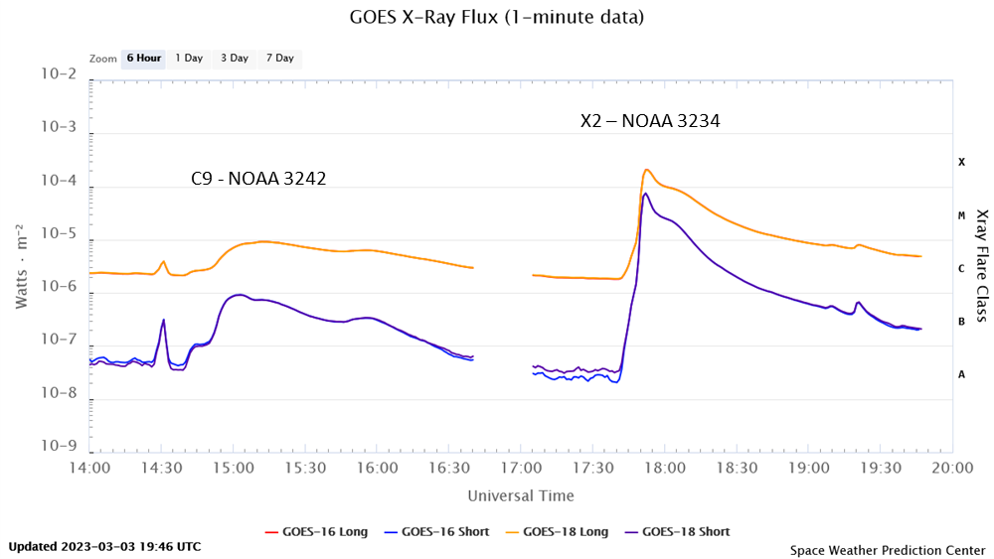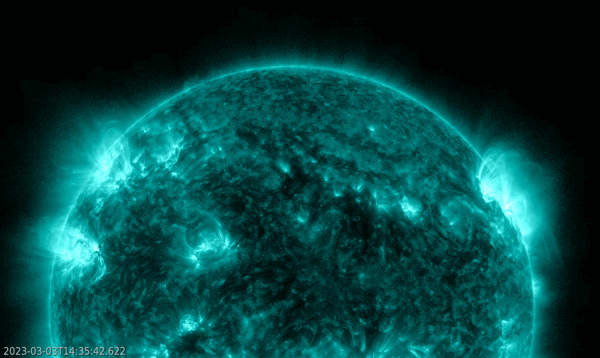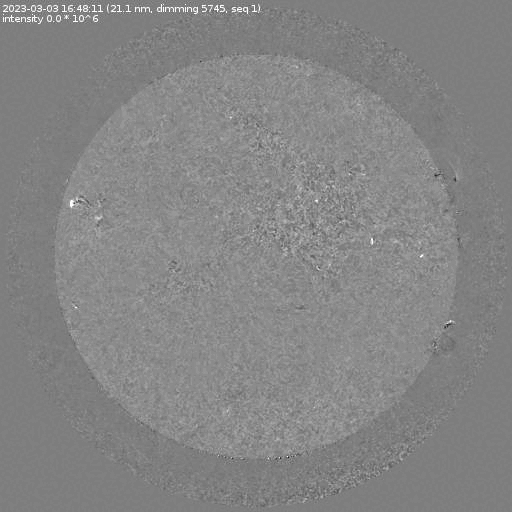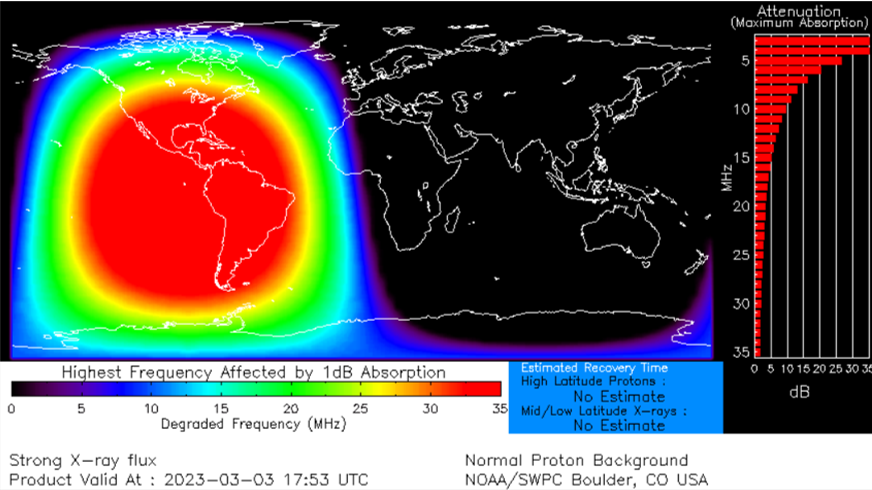NOAA 3234, the largest and magnetically most complex sunspot region currently on the solar disk, produced an X2 flare on 3 March peaking at 17:52 UTC. The GOES x-ray flux underneath shows a C9 flare peaking at 15:12 UTC from NOAA 3242 -an active region near the northeast limb-, and the X2 flare peaking at 17:52 UTC from NOAA 3234 (Solar Monitor). Extreme ultraviolet (EUV) imagery from SDO/AIA 131 shows both flares in their source regions. The blooming and diffraction patterns in the EUV images are image artefacts, not related to the flare - See this STCE newsitem for more info.


Associated with this eruption was a coronal wave (also known as EIT wave - see this STCE newsitem at for more info on this feature). It was nicely captured by the Solar Demon tool of the SIDC, using base difference images (SDO/AIA 211) where the first image in the sequence is subtracted from the current image. The EIT wave can be seen bouncing into the coronal hole that is close to the disk centre (annotated image).

Also associated with the eruption was a Type II radio burst has been reported by the Radio Solar Telescope Network (RSTN; NOAA/SWPC event reports). The radio-spectrogram underneath shows a small portion of this Type II event best visible between 18:05 and 1812 UTC, with horizontally the time (from 17:45 UTC till 18:15 UTC), and vertically the frequency (source: eCallisto/Arecibo Observatory). The event was also reported to be a Tenflare (200 sfu), and enhanced radio emissions were also observed at other wavelengths including GNSS (but mildly only). Due to the timing of the flare, the daily solar radio flux as measured in Penticton (BC, Canada) at 20 UTC was still a bit affected, reaching a value of 190.9 sfu which is well above its current daily values around 170-175 sfu.

The radio and EUV observational data thus suggest a coronal mass ejection associated with this flare, and sure enough, STEREO-A imagery showed a first glimpse of the CME at 18:23 UTC. A quick analysis provided a preliminary projected (plane-of-the-sky) speed around 950 km/s. Due to the location of the source region and the observed width of the coronal wave, chances are small that this CME has an earth-directed component. The bulk of the CME is certainly not directed towards Earth.

The map underneath (D-RAP) shows that the soft-ray and EUV emission from this flaring event may have resulted in a radio black-out affecting HF radio communications mainly over the United States, Latin-America, and the eastern portion of the Pacific. Advisories for civil aviation (image) have been issued (PECASUS). Magnetometer stations from the Intermagnet network reported no obvious solar flare effect ("magnetic crochet"; more info). Further flaring from this active region remains possible, but it is expected to diminish over the next days as the region is about to round the solar west limb.






